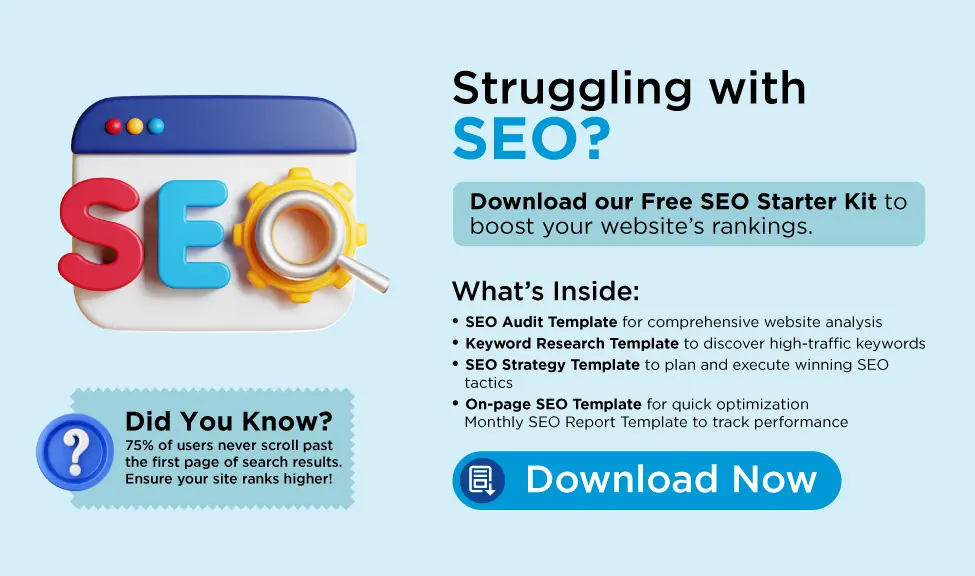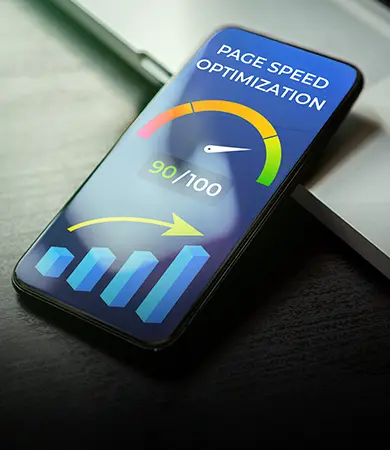10 Steps for Startup Founders to Build a Personal Brand on Social Media
Read MoreIn the fast-paced digital world, website page speed is a critical factor that can significantly impact user experience and search engine rankings. Slow-loading websites frustrate users, leading to higher bounce rates and lower engagement, which can negatively affect your online presence and business performance. As the best SEO agency in Dubai, we understand the paramount importance of optimizing page speed to ensure your website not only meets but exceeds user expectations. Our expertise in this area allows us to enhance your site's performance, ensuring it operates at its peak potential.
Key Takeaways:-
- Page Speed Impacts SEO and User Experience: Faster loading times enhance user satisfaction and are a critical ranking factor for search engines.
- Optimize Key Elements: Improve page speed by compressing images, reducing HTTP requests, minifying code, enabling browser caching, and using a CDN.
- Regular Monitoring and Adaptation: Continuously monitor your page speed with tools like Google PageSpeed Insights and adapt strategies to ensure optimal performance and SEO benefits.
This detailed guide will cover everything you need to know about page speed and how to improve it through effective on-page optimization techniques. By following our comprehensive strategies, you can achieve faster load times, higher search engine rankings, and a better overall user experience.

What Is Page Speed & How to Improve It
What Is Page Speed?
Page speed refers to the time it takes for a webpage to load fully. It is a crucial component of user experience, as faster-loading pages tend to keep visitors engaged and reduce bounce rates. Slow page speeds can frustrate users, leading them to abandon the site and look for alternatives.
Why Is Page Speed Important for SEO?
Page speed is a vital ranking factor for search engines like Google. Faster-loading pages are more likely to rank higher in search results, leading to increased visibility and traffic. Additionally, improved page speed enhances user retention and engagement, contributing to higher conversion rates and better overall site performance.
How Core Web Vitals Affect Page Speed
Core Web Vitals are a set of metrics introduced by Google to measure key aspects of user experience, including page speed. These metrics include Largest Contentful Paint (LCP), which measures loading performance and should occur within 2.5 seconds of when the page starts loading to provide a good user experience. First Input Delay (FID) measures interactivity, and pages should have an FID of less than 100 milliseconds. Cumulative Layout Shift (CLS) measures visual stability, and pages should maintain a CLS of less than 0.1.
Tools to Check Your Page Load Time
- Google PageSpeed Insights: Provides insights and suggestions for improving page speed.
- Google Lighthouse: An open-source tool that audits performance, accessibility, and SEO.
- WebPage Test: Allows you to run tests on your site from multiple locations worldwide.
- Pingdom Website Speed Test: Offers detailed performance reports and actionable insights.
- GTmetrix: Provides a comprehensive analysis of page speed and suggestions for improvement.
- Semrush Site Audit: A powerful tool that checks page speed and other technical SEO aspects.
5 Ways to Improve Your Page Speed
- Compress Your Images: Large images can significantly slow down your website. Use optimal image formats like JPEG for photographs and PNG for graphics with fewer colors. Tools like TinyPNG and ImageOptim can help compress images without compromising quality.
- Reduce HTTP Requests: Each element on a webpage (images, scripts, stylesheets) requires an HTTP request. Reducing the number of requests can speed up page loading times. Combine CSS and JavaScript files, use CSS sprites for images, and remove unnecessary elements.
- Minify JavaScript, CSS, and HTML: Minification involves removing unnecessary characters (like spaces and comments) from code without affecting functionality. Tools like UglifyJS, CSSNano, and HTMLMinifier can help you minify your code, leading to faster load times.
- Enable Browser Caching: Browser caching stores static files on a user's device, reducing the need to reload them each time the user visits your site. Set caching headers to specify how long browsers should keep these files, improving load times for returning visitors.
- Use a Content Delivery Network (CDN): A CDN distributes your website's content across multiple servers worldwide, reducing the distance between users and your site. This leads to faster loading times and improved user experience. Popular CDN providers include Cloudflare, Amazon CloudFront, and Akamai.
Page Speed and Technical SEO
Page speed is an integral part of technical SEO, as search engines prioritize websites that offer fast, smooth user experiences. Websites that load quickly are more likely to retain users, reduce bounce rates, and convert visitors into customers. By optimizing your page speed, you can enhance your SEO performance, making your site more competitive in search rankings and more appealing to your audience. Conduct regular page speed audits using tools such as Google PageSpeed Insights, Google Lighthouse, WebPage Test, Pingdom Website Speed Test, GTmetrix, and Semrush Site Audit to identify areas for improvement. Choose a reliable hosting provider that offers fast servers and excellent support to ensure your site runs smoothly.
Additionally, optimize your site for mobile devices, as mobile traffic continues to grow and users expect fast load times on their smartphones and tablets. Limit the use of plugins, as too many can slow down your site, and regularly update them to avoid performance issues and security vulnerabilities. By following these best practices, you can effectively integrate page speed optimization into your technical SEO strategy, ensuring that your website performs at its best and provides an exceptional user experience. This approach not only improves your search engine rankings but also builds trust and credibility with your audience, ultimately driving more traffic and conversions.
Conclusion
Page speed is a critical factor in providing a positive user experience and achieving high search engine rankings. In today's competitive digital landscape, users expect websites to load quickly and smoothly. Slow-loading pages can lead to frustration, higher bounce rates, and lost opportunities for engagement and conversions. As the best SEO agency in Dubai, we recommend implementing the strategies outlined in this guide to improve your website's page speed. These strategies are designed to address various aspects of your site's performance, from image optimization to server response times.
By doing so, you'll enhance your site's performance, boost user engagement, and achieve better SEO results. A faster website not only improves user satisfaction but also signals to search engines that your site is well-optimized, which can lead to higher rankings and increased visibility in search results. Investing in page speed optimization is an essential step towards long-term online success and maintaining a competitive edge in your industry.






